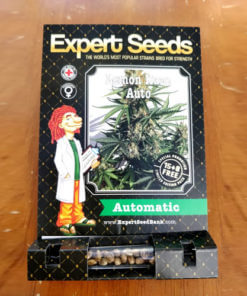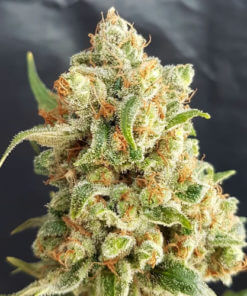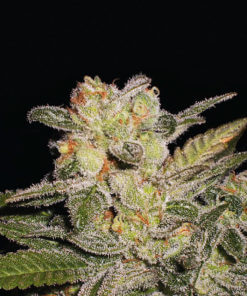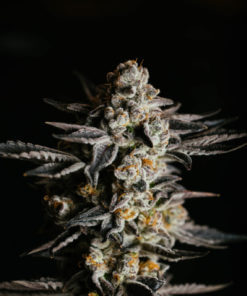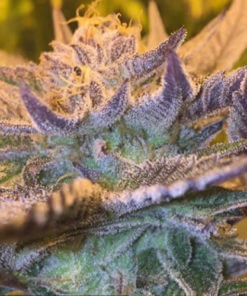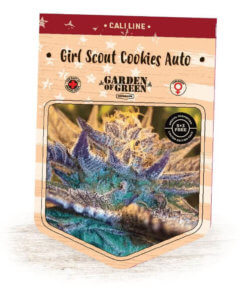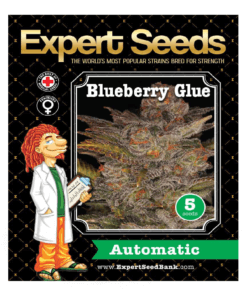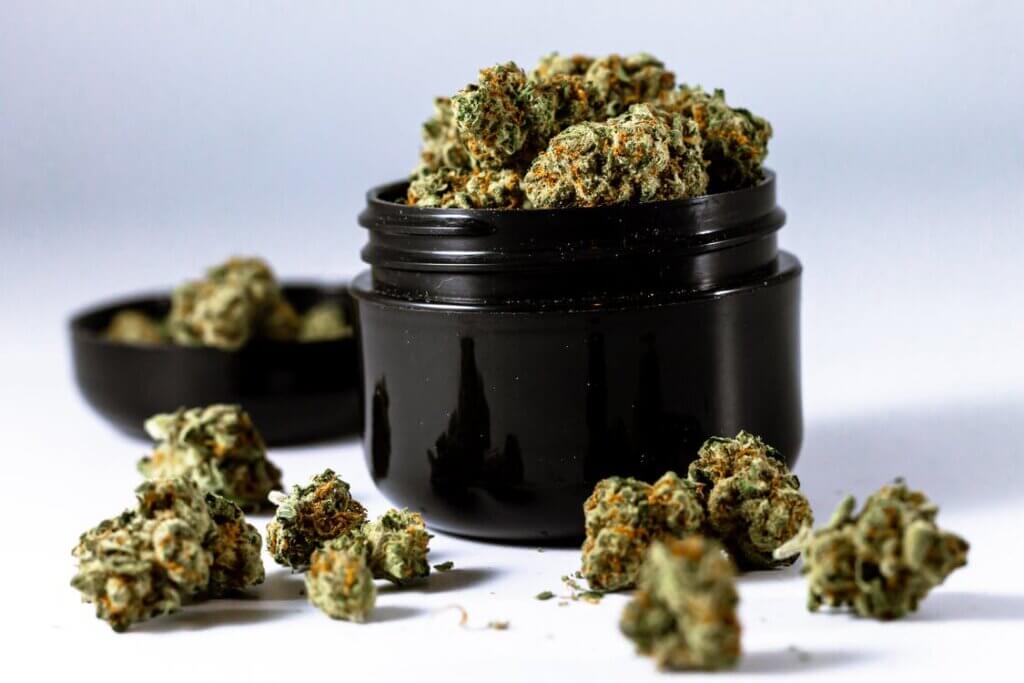cannabis growing
PGRs for Weed and The Effect They Have on Your Weed
Many farmers use PGRs to grow their crops. Cannabis farmers may also benefit from using PGRS when growing their weed crops. However, some weed growers may be concerned about the effects that PGRS can have on their weed. Growing weed takes a lot of effort, and you don’t want to ruin your weed by adding the wrong chemicals to it.
Please continue reading to learn about PGRs for marijuana and their effects on your weed. We all help you determine if PGRs are the right course to take to regulate your weed’s growth. PGRs come in handy for many crops, and you may find it beneficial to use PGRs on your weed crops.
PGRs in Weed
PGR is an acronym for plant growth regulators. PGRs are used often while farming to take control of the growth of a crop. The way people work is when you spray the chemical onto your crop, it’ll affect the plant’s hormones and accelerate the growth of the crop. PGRs also reduces hormones that cause the crop to be smaller.
Some marijuana growers use PGRs for their weed to increase the size of their buds. This practice is widespread with commercial cannabis sellers. Commercial cannabis sellers constantly seek to get the giant buds out of their crops.
However, many marijuana growers are reluctant to use any chemicals on their weed plants to avoid contaminating their weed. In the United States, it is legal for commercial cannabis makers to use pesticides and herbicides on their marijuana crops which is concerning because those crops are smoked later by consumers. So, are PGRs safe to use on your weed?
There are not too many studies on the long-term effects of smoking cannabis treated with PGRs. However, many consumers like to air on the side of caution and choose organic cannabis that has not received chemical treatment. This scenario means that marijuana companies can see larger profit margins by not treating their crops even though they are ensured to have larger buds when they treat their crops with PGR.
Many people who smoke cannabis are uncomfortable with their weed being treated by PGRs. This factor is something growers need to consider when growing their weed plants because sometimes the bear buds aren’t always the ones that sell better. Some marijuana consumers are not concerned about PGRs and their weed, but there’s not enough research on the effects of smoking weed treated with PGRs to come to many set conclusions. However, a few conclusions can be drawn about PGRs’ effects on human health.
What is The Role of PGRs in Plants?
PGRs play a role when it comes to growing plants because PGRs will make plants larger. Pictures are prevalent when used in the food industry to get larger food crops that are eye appealing to consumers. Some people may find a false sense of security when consuming food that has been enhanced with PGRs, but it’s important to note that food treated with pesticides is also legal to sell in the United States.
PGRs alter a plant’s hormones to encourage growth and discourage anything that could stunt a plant’s growth. PGRs are very common in commercial farming because commercial farmers want to produce the largest crops possible. PGRs can also be used in plant growth to encourage the plant to grow faster than it would naturally.
PGRs affect plant hormones the same way that animal hormones affect animals. For example, an animal is going through puberty. As a result, the animal will see large amounts of growth and different behavior changes. PGRs also affect plant behavior and growth because PGRs are plant hormones. PDR works right away to alter a plant’s growth process because plant hormones take effect as soon as they are applied.
Every year more and more people lean more towards organic produce and other organic plants while they’re out shopping. Even though PGR-treated food and other plants yield more significant results, many prefer plants that are untreated with any other chemicals. Just because these growth hormones are used on produce, that does not mean they are safe for consumption.
Why Use PGRs When Growing
Many commercial cannabis companies use PGRs and their weed plans because they want to produce larger, heavier buds. Using PGRs is an easy and guaranteed way to get these large, heavy buds for weed companies. In addition, weed companies often use PGR-treated buds to appeal to consumers’ aesthetic tastes.
Even though the large, heavy buds look fantastic on camera, there is a downside to using PGRs on cannabis. Many growers can see an enormous profit by not using PGRs on their cannabis because many consumers do not like chemical-treated cannabis. In addition, weed treated with PGRs often has lower cannabinoids and terpenes, which people seek out in their marijuana.
So, even though the cannabis buds you receive when you use PGRs on weed plants are more prominent, they are often not as effective as those of those that are untreated with PGRs. This situation can be a massive turnoff to cannabis consumers and lead growers who use PGRs on their weed plants to lose a lot of business.
So, even though initially a consumer may be attracted to a cannabis bud that appears ample and fat on camera, once they use the cannabis, they won’t have the same effects as they would from naturally grown cannabis. If a consumer notices that they are unsatisfied with the weed they buy from a company, they are unlikely to continue business with that company.
Cannabis growers who do not use PGRs when growing cannabis will see more business because their consumers will be more satisfied with the psychoactive effects of the weed. People want to get the most bang for their buck, and even though PG is treated, cannabis is larger, and people will see more potent effects from naturally growing cannabis. Naturally grown cannabis growers often see return clients, whereas PGR growers might not see return clients.
Are PGRs Dangerous for Human Health?
The use of PGRs in different countries is controversial. Some countries entirely ban the use of PGRs for agricultural crops. However, countries like the United States use PGRs and food plants, and marijuana plants are perfectly legal and common for mass distribution.
The most common features used in the United States are chlormequat chloride, daminozide, and paclobutrazol. So far, many studies have been inconclusive as to whether PGRS on crops negatively affects human health. However, that does not mean that PGRs are harmless. These studies are still in effect and can take years to conclude.
People who have concerns about the effects of PGRS on human health have a good reason to be concerned. There have been many situations where legal chemicals have been added to crops and turned horrible for human health. So if you want to air on the side of caution, it would be best to avoid PGR-treated crops to maintain a healthy body.
Different PGRs have been shown to have adverse effects on human health. Some standard features used in agriculture can damage the lungs in the liver. Other types of PGRs are often used in agriculture and have been proven to increase the chance of cancer. Consuming PGR-treated plants can have a lasting effect on human health.
- The Impact PGRs Have on The Environment (50-80 words)
Many people have been concerned about environmental damage in recent years. With increasing concerns about climate change, people look to have a smaller ecological footprint. PGRs are harmful to the environment.
There have been studies that have shown that PGRS can negatively affect organ development in fish. This issue is a primary environmental concern because PGRs often end up in rivers, streams, and lakes. Therefore, using PGRS can have lasting environmental effects on marine life and cause animals to see smaller numbers.
Climate change is a real issue to consider when purchasing cannabis. Your cannabis purchases can affect your eco-footprint and work towards improving the environment. You should buy naturally grown cannabis for the lowest eco-footprint.
Signs of PGR Weed (PGR Weed vs. Natural)
Weed treated with PGRs is easy to spot, especially in places where cannabis is still illegal. Therefore, it is ideal to look for the signs of PGR-treated weed to avoid any possible adverse health effects when consuming your marijuana. The following are traits to look out for in two identified PGR-treated weeds.
- If you notice that the weed buds are denser than others, you are probably looking at PGR weed. While some growers like to show off the thickness of their buds, it is a prevalent sign that a weed plant is treated with hormones when buds are too thick. So, despite the seller trying to show off the weed due to the thickness of the bud, you aren’t receiving an as high quality of a product as you would with a less dense bud.
- Many people who are treated with weed buds do not have a potent aroma. This is because PGRs stunt the terpene development and weed, and terpenes are the primary source of the weed’s aroma. With natural weed, you can easily smell the weed even from a distance. However, with PGR-treated weed, you have to put your nose right up to it, and you will barely get a smell. Therefore, smelling your weed is one of the most vital tools you can use to identify PGR weed.
- PGR-treated weed is usually darker in color than natural weed. Because the hormones are adjusted in the weed to accommodate enormous growth, the trichrome count is reduced on the weed buds. The lack of trichomes is what gives PGR-treated weed a darker color. If you are looking for natural weed, you should look for bright and colorful weed. PGR treated weed is dull and usually single-toned.
Natural weed will give users better effects than PGR-treated weed. You won’t have to worry about chemical additions that can have adverse health effects by smoking natural weed. Natural weed also has stronger terpenes which can contribute to a better high. Many weed consumers complain that PGR weed does not give them as strong of effects as a natural weed.
PGRs: Why Should You Grow Your Own Weed or Shop Wisely
To ensure that you’re getting the best weed for your dime, you need to learn how to distinguish PGRS from natural weed. Keeping a keen eye on PGR-treated weed is a fantastic way for weed consumers to get the best product for their money. However, some consumers may want to grow their own weed at home. By controlling the weed growing process, you will ensure that you get the best weed possible.
Home growing has gained a lot of popularity in recent years, and many people finally have the confidence to grow their weed at home. There is tons of information publicly available for new home growers to prepare themselves to get the best weed possible. New growers need to do thorough research before growing their weed to ensure that they don’t waste time and supplies.
Final Thoughts on PGR Treated Cannabis
PGR-treated cannabis can have negative consequences for humans and the environment. Cannabis consumers should keep an eye out for naturally grown cannabis because naturally grown cannabis also has more potent effects than PGR-treated cannabis. The sole purpose of PGR treatments is to ensure that the buds are larger than they would be in unnaturally grown cannabis.
Larger buds don’t always mean that the product will be better; it just means there’s going to be more of it. Cannabis growers use PGR chemicals on their cannabis to get the most product out of their cannabis plants. However, many growers who grow naturally grown cannabis can also see large profits because naturally grown cannabis is more sought after than PGR-grown cannabis.
PGRs for Weed and The Effect They Have on Your Weed (FAQ):
What does PGR do to plants?
Plant growth regulators, also known as PGRs, are chemicals used to change plants’ growth in various ways, including but not limited to enhancing branching, suppressing root development, enhancing return bloom, removing surplus fruit, or adjusting fruit maturity.
Are natural PGRs safe?
It is a common misconception that all PGRs are detrimental, however this is not always the case. The natural plant growth regulators that are found in our atmosphere, such as chitosan, triacontanol, and kelp, do not create any issues for plants.
Is PGR illegal?
The fact that these PGRs were made illegal in the food business should be brought to your attention since it is vital to note that the cannabis industry has flown under the radar in regards to the illegal use of PGR’s.
What is a natural PGR?
Plant growth regulators, also referred to as PGRs, are molecules that have an effect on the development of plants and are typically active at extremely low concentrations. There are natural regulators, which are created by the plant itself, and there are also synthetic regulators. The regulators that are found naturally in plants are known as phytohormones or plant hormones. Synthetic regulators are produced in a laboratory.
Do you water after PGR?
When applied first thing in the morning or late at night, when the rate of evaporation is at its lowest, plant growth regulators will have a greater chance of being taken up by the plant. After the PGR has been applied, it should be allowed to dry, and no water should be allowed to come into contact with the leaves during this time.
How much PGR should I use?
Use 250 ml per 10 liters of water. In order to rein in uncontrolled expansion and bring out robust vegetation. 12.5 ml per 10 liters of water is the recommended dosage.
Is PGR organic?
PGRs serve several purposes and have many applications. Although their primary focus is on development, flowering, and fruiting, they are typically classified and regulated as pesticides. Some are organic substances, and they are often the ones utilized to stimulate roots.

